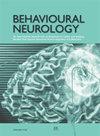Mice Recognise Mice in Neighbouring Rearing Cages and Change Their Social Behaviour
IF 2.7
4区 医学
Q2 CLINICAL NEUROLOGY
引用次数: 0
Abstract
Mice are social animals that change their behaviour primarily in response to visual, olfactory, and auditory information from conspecifics. Rearing conditions such as cage size and colour are important factors influencing mouse behaviour. In recent years, transparent plastic cages have become standard breeding cages. The advantage of using a transparent cage is that the experimenter can observe the mouse from outside the cage without touching the cage. However, mice may recognise the environment outside the cage and change their behaviour. We speculated that mice housed in transparent cages might recognise mice in neighbouring cages. We used only male mice in this experiment. C57BL/6 mice were kept in transparent rearing cages with open lids, and the cage positions were maintained for 3 weeks. Subsequently, we examined how mice behaved toward cagemate mice, mice from neighbouring cages, and mice from distant cages. We compared the level of interest in mice using a social preference test. Similar to previous reports, subject mice showed a high degree of interest in unfamiliar mice from distant cages. By contrast, subject mice reacted to mice from neighbouring cages as familiar mice, similar to cagemate mice. This suggests that mice housed in transparent cages with open lids perceive the external environment and identify mice in neighbouring cages. Researchers should pay attention to the environment outside the mouse cage, especially for the social preference test.小鼠识别邻近饲养笼中的小鼠并改变其社交行为
小鼠是一种社会性动物,它们的行为主要是根据来自同类的视觉、嗅觉和听觉信息而改变的。笼子的大小和颜色等饲养条件是影响小鼠行为的重要因素。近年来,透明塑料笼已成为标准饲养笼。使用透明笼子的好处是,实验人员可以从笼子外观察小鼠,而无需接触笼子。然而,小鼠可能会识别笼子外的环境并改变其行为。我们推测,被关在透明笼子里的小鼠可能会认出邻近笼子里的小鼠。本实验只使用雄性小鼠。我们将C57BL/6小鼠饲养在盖子打开的透明饲养笼中,并将笼子的位置保持了3周。随后,我们研究了小鼠对同笼小鼠、邻笼小鼠和远笼小鼠的行为。我们使用社交偏好测试比较了小鼠的兴趣水平。与之前的报道相似,实验对象小鼠对来自远处笼子的陌生小鼠表现出高度兴趣。相比之下,受试小鼠对邻笼小鼠的反应与笼伴小鼠类似,都是将其视为熟悉的小鼠。这表明,被关在开盖透明笼子里的小鼠能感知外部环境,并识别邻近笼子里的小鼠。研究人员应该关注小鼠笼外的环境,尤其是在社会偏好测试中。
本文章由计算机程序翻译,如有差异,请以英文原文为准。
求助全文
约1分钟内获得全文
求助全文
来源期刊

Behavioural Neurology
医学-临床神经学
CiteScore
5.40
自引率
3.60%
发文量
52
审稿时长
>12 weeks
期刊介绍:
Behavioural Neurology is a peer-reviewed, Open Access journal which publishes original research articles, review articles and clinical studies based on various diseases and syndromes in behavioural neurology. The aim of the journal is to provide a platform for researchers and clinicians working in various fields of neurology including cognitive neuroscience, neuropsychology and neuropsychiatry.
Topics of interest include:
ADHD
Aphasia
Autism
Alzheimer’s Disease
Behavioural Disorders
Dementia
Epilepsy
Multiple Sclerosis
Parkinson’s Disease
Psychosis
Stroke
Traumatic brain injury.
 求助内容:
求助内容: 应助结果提醒方式:
应助结果提醒方式:


